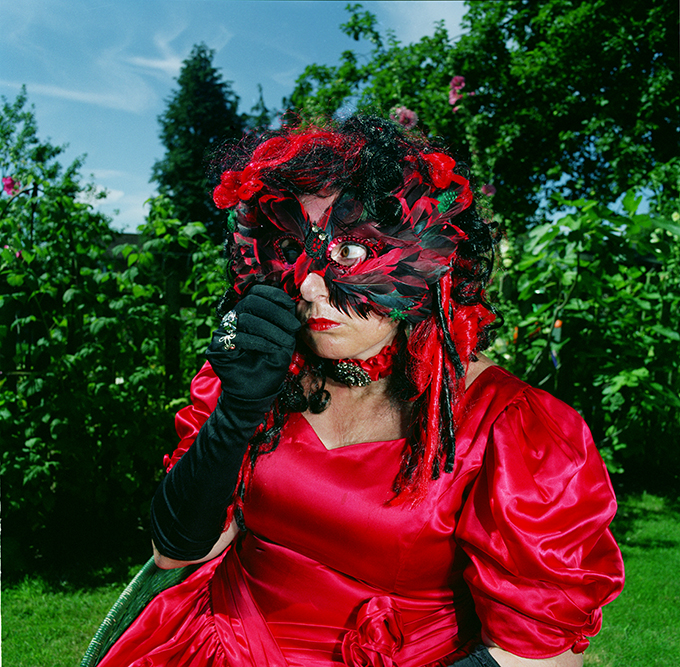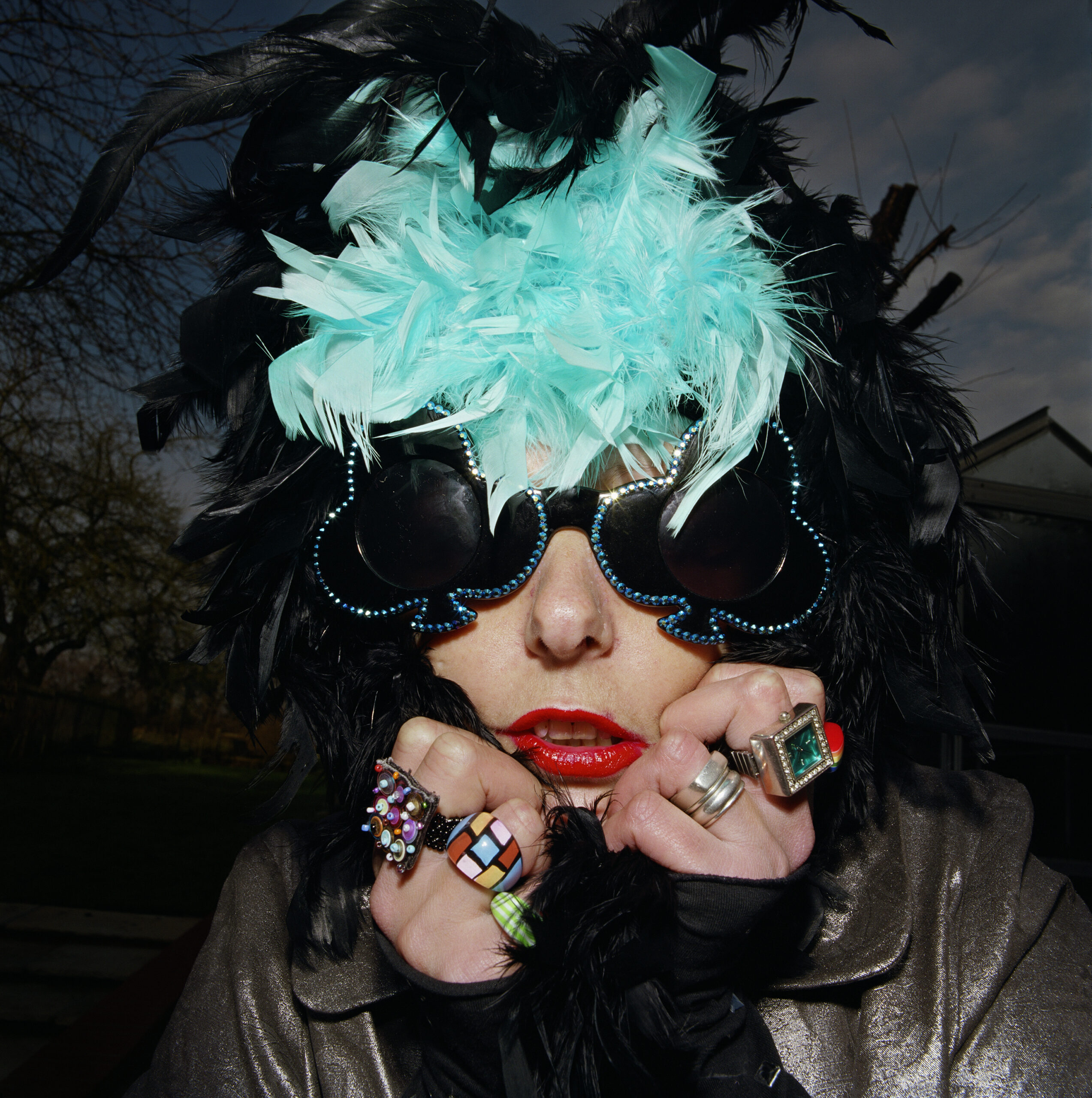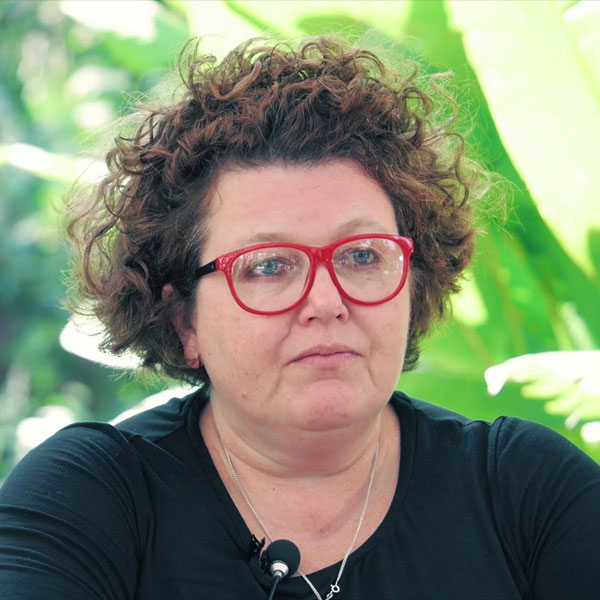In Conversation with Anna Fox
Anna Fox discusses the representation of women, the relationship between a photographer and her subject, and life during lockdown.
A Picture of Health, presented by Arnolfini Bristol, is a group exhibition by contemporary women photographers which responds to the topic of health and wellbeing to de-stigmatise conversations about mental health. With her Pictures of Linda collection, Anna Fox hopes to challenge the myths and conventions surrounding the representation of women. In this virtual interview, we discuss Anna’s muse Linda Lunus, her artistic process, and the ways she has been keeping busy during lockdown.
Shyama Laxman: Your project Pictures of Linda has been ongoing for almost three decades. I have read that you first photographed Linda Lunus at a party. Could you tell me a bit more about that time? What drew you to her back then?
Anna Fox: Yes, I was in my early 20s and Linda was maybe 18. I was living in a small town in the South of England, and I was on the edge of the local music scene which included Punks and Goths. I had started photographing for a couple of music magazines such as Zig Zag and Wot. Linda arrived on the scene; she had followed her brother Tony down from Cobham and started dating a local guy. As not much went on in this small town we all usually ended up gathering at each other’s place on Friday and Saturday nights, drinking, smoking and listening to music. It was a small community of disgruntled 20-somethings, interested in music, fed up with the status quo.
SL: In your words, Pictures of Linda ‘aims to challenge myths and conventions concerning representations of women, particularly with reference to the picturing of women in rural locations’. Could you elaborate on this?
AF: Linda was a true Punk – I first met her as a Goth but then she became a Punk – everything she did questioned the representation of women in rural life. She walked around in the same costumes that she wore in the pictures. She was brave and anarchic and didn’t care what people thought and believe me, people think a lot in the conservative South. I remember getting scornful comments when I wore brightly patterned tights in the pub! Linda did as she pleased and laughed if anyone said anything about how she looked.
SL: You have said that Pictures of Linda ‘aims to question the power relationship between subject and photographer in the creation of photographic portraiture.’ Some of the images of Linda are rather intimate. How do you ensure that the ‘gaze’ doesn’t become voyeuristic or ‘objectify’ your subject?
AF: It is certainly difficult, and maybe you can never be completely sure that you are doing things right. But the most important thing throughout the project was that we were continuously reviewing the work. We also made the film where we swapped roles (which I found excruciating!). Later on in the project (when I couldn’t photograph Linda enough to keep her happy and after she had tested being the photographer in the film) I suggested that she start making self-portraits which she did. The whole body of work has never actually been exhibited and hopefully it will be one day as there is lots of material and the whole story is only really understood with all the material.
SL: Could you tell me a bit more about the film and the swapping of roles? What was it like to surrender control?
AF: We decided to make the film as a way of talking more openly about the work and also a way of telling people more about the work and about us and our relationship. It was made collaboratively and with much discussion all the way along. I edited the film with a professional production team and then Linda approved it; she was unable to come and edit with us for personal reasons. I didn’t ever think of myself as surrendering control – I always thought of both Linda and I having control, although to some extent, because I worked on the edit, ultimately I had control of some of the final decisions (which she did have to approve). The time that I felt vulnerable was when I was dressing up and Linda was directing me for the camera when she took the photos, and then as well we both went out to the local town dressed up and that felt awful (though we didn’t film it). Unlike Linda I knew nothing about posing for the camera, modelling is not a skill I had learnt, so when I photographed Linda she was really taking part and controlling how she posed – I found locations and directed the camera and lighting and Linda directed her pose and costume. When she was photographing me she also had to direct me and dress me, and I was not comfortable doing the things she suggested, but I did it. Outside in the street I simply hated the attention that dressing up brought, I am quite shy and don’t want to talk to people in the street. When you dress up people come and talk to you, it was unnerving and not something that I intend to do again. When I photographed Linda in the hospital it was at her invitation, in fact she asked me so many times to come and film and photograph in hospital that I was eventually persuaded. I had never been in a psychiatric ward and it was quite a shock/surprise and as well Linda was clearly in an extraordinarily hyperactive state of mind when I was there. Still I continued to make the film and she enjoyed the process. Once she was out of hospital then I showed her the footage and she was shocked and took a long time, together with her husband, to decide whether to use it or not. Then one day, many months later, she decided it was a good idea as it was a part of her story and her life – she speaks about this in the film and I hope it clearly articulates what she thought. One of the things about this whole project is there was never any pressure to complete it, at first we never even thought of it as a project, we just made pictures. When it became a project we have no vision of finishing, it was sadly only her death that meant we had to finish it. This lack of pressure with no defined ending made it a different kind of work than most projects that I do and I never felt any urgency in doing it. Her family would like me to make a book of the work now and I am still taking my time thinking about how to do this – I will of course consult with them when it eventually happens, but thinking time is really useful and creative.
SL: When you undertake a project that spans longer time periods, what does the artistic process entail? How did you and Linda commit the time and maintain the creative spirit amid logistical considerations?
AF: Well Linda was more than enthusiastic and in her ideal world I would have been photographing her everyday – she wanted as much time as I could give to the work. This is why I asked her to start photographing herself, because I just could not keep up. And then when Linda started to send me her own photographs I saw how important this exchange was. We always talked about everything, the creative spirit was more than there all the time, and we never had to worry about what to do. Linda was full of ideas and excitement, her family supported her and always helped with both her shoots and mine. The artistic process entailed Linda collecting and creating outfits (which were her everyday wear and her total passion), then us getting together. Linda and her husband did most of the styling, and then I directed and created the images using both medium and large format cameras and frequent lighting. Later on I selected a number of images and sent them to Linda and she would feed back her comments.
SL: When you have a personal relationship with your subject, how does it impact your work? How do you take the emotions out while the work is in progress?
AF: We became friends over a period of time, not just through the photography but because we were a small group of disenchanted, somewhat anarchic young people in a very small town. I photographed Linda before I knew her, and got to know her very quickly after that. I gave her prints and as soon as she saw them she jumped on the opportunity to work further with me as she loved the images. It was a bit strange in a way to be always doing a photo shoot when we met but we also had meals and occasionally went to the pub and the shoots were a family affair as her husband and son were mostly always there and my partner too and sometimes my sons. Linda was an unusual person, it is hard to imagine her and I without the photography; I don’t think we knew any other way.
SL: A Picture of Health looks at issues of physical and mental wellbeing. Do you think art has a positive impact on mental health? How do you take care of your mental health?
AF: I think art is vital to mental wellbeing and I would love it if there was more research into this because I think it could be ground-breaking. Linda really made this project work for her and I know it meant a lot to her and her family; I am not just the photographer who met Linda and became friends. Linda was a part of the community I was involved in and she wanted to get something out of this, she made this happen, she was so much more confident about ideas than I have ever been.
I walk – that is the only way to keep sane as far as I am concerned. I used to swim as well but that’s been off for a while!
SL: I have read in another interview of yours that in the current situation – the COVID-19 pandemic and lockdown – you have created ‘a very tight schedule’ for yourself. What is a typical day like for you? How do you keep the creative energy going?
AF: Well I have to admit that this second lockdown has been harder and I have lost the plot from time to time. I think the main problem, aside from the obvious problems related to the pandemic, is that we lack a connectedness to the world. Moving around, walking, thinking, talking to people we meet, travelling all these things make our brains tick over in a special way and in missing these experiences we become stagnant, our brains seem to find it harder to think creatively. I did develop a regime for myself in the first lockdown and then it failed in the second and so I need to restart it! Essentially I like to get up early – I prefer the morning to the evening. Ideally I walk first either on a walking machine or preferably outside – I do 1.5 hrs per day. Then if I am teaching (which I do 2 days per week) – then I am full-on teaching all day before moving on to my own work, usually in the evenings. The weekdays are long and when I am not teaching I am working on the Fast Forward Women in Photography research project (for which we have just been awarded an AHRC grant). For big projects I take research time (which is time that the University gives its staff – it’s about 25 working days per year) which allows me to go and work on something for a period of time. At the moment I have a project in the US in collaboration with Karen Knorr and another in India in collaboration with Chinar Shah and both are obviously on hold. I also have two personal projects, one which I am editing and the other I am still shooting – both of these can be done at home and I usually work on them at the weekend. I work on things very slowly as teaching and related administration takes a lot of time – it is also incredibly enjoyable and rewarding.
SL: What is the first thing you would like to do when the world returns to normality?
AF: Start a project I have wanted to do for ages (top secret), meet friends in person, go to exhibitions, go to the pub, have some really good get togethers and just get photographing more and try to finish those long term projects.
SL: Are you thinking about any new projects? Where do you derive your inspiration?
AF: I always have new projects on my mind and many of them will not work out or there just isn’t time to do them. I need to have more than one idea at a time and so if one doesn’t work it doesn’t matter because at least one of the others will work. Inspiration comes from daily life, from talking to people, from reading (I read a lot of fiction), from listening to the radio and the news.
SL: Your work My Mother’s Cupboards and My Father’s Words was part of the ‘Masculinities: Liberation through Photography’ exhibition last year at the Barbican Centre. ‘Toxic masculinity’ is a phrase that we have started hearing a lot in the last two years or so. Did you experience anything like this when starting your career, at a time when photography was dominated by men?
AF: I don’t like the phrase as it is too general and seems threatening which I don’t find helpful though I am certainly pleased when misogyny is exposed and derailed. The photography world is certainly male dominated and it needs to change. It was a lot more so when I started. It’s not that women aren’t involved, they certainly are, they just get hidden more often, and it’s to do with networks, how we put value onto certain kinds of success and also about how women frequently get cut out because they have other things to do such as caring work of one kind or another. We need to be more intelligent, more broad minded and work out how to structure our societies better and in a way that allows women to work. Ultimately we need to open our eyes and look for the stories of women photographers because they do not always jump out at us.
SL: What advice would you give young women who want to enter the field of photography?
AF: Make work and keep making work, believe in yourself, network and meet people, show your work often, feel positive and know that you are good at what you do. Keep up to date and informed and above all share and help each other.
Anna Fox is an acclaimed British photographer and Professor of Photography at the University for the Creative Arts, Farnham. Her notable works include Work Stations: Office Life in London (1988), a study of office culture in Thatcher’s Britain; Zwarte Piet (1993 – 8), a series of portraits taken over a five-year period that explore Dutch black-face folk traditions associated with Christmas; Country Girls (1996 – 2001) and Pictures of Linda (1983 – 2015), both of which challenge views about rural life in England; and My Mother’s Cupboards and My Father’s Words (1999), which examines dysfunctional relationships within families. Anna was awarded an Honorary Fellowship of the Royal Photographic Society in 2019.
By Shyama Laxman













